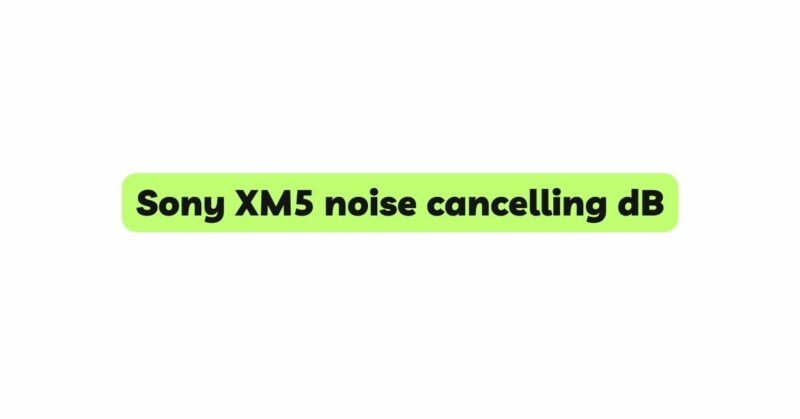When it comes to noise-cancelling headphones, the Sony WH-1000XM5 has been hailed as a leader in the industry. Among its impressive array of features, the ability to block out external noises is a key highlight. In this comprehensive article, we will dive into the world of decibels (dB) to understand the science behind Sony XM5’s noise cancelling, how it measures up against competitors, and the real-world implications for users seeking tranquility in their audio experience.
- The Basics of Decibels (dB)
Decibels are the unit of measurement used to express the intensity of sound. It is a logarithmic scale, which means that a small change in dB represents a significant change in sound volume. Understanding the dB scale is crucial for grasping the noise-cancelling capabilities of headphones like the Sony XM5.
- Noise Cancelling Ratings and Effectiveness
Manufacturers often provide Noise Reduction Rating (NRR) or Active Noise Cancellation (ANC) ratings to quantify the effectiveness of noise cancelling in their headphones. We explore how these ratings are determined, their limitations, and how they correlate with real-world performance.
- Sony XM5’s Noise Cancelling Performance
a. Laboratory Testing: Sony employs controlled laboratory environments to test the XM5’s noise cancelling. We delve into the methodology and results of these tests to understand the headphone’s performance under ideal conditions.
b. Real-World Situations: While laboratory tests provide valuable insights, real-world scenarios present more varied challenges. We examine how the Sony XM5 fares in different settings, including city streets, public transportation, and noisy cafes.
- Active Noise Cancelling Algorithms
The Sony XM5’s effectiveness stems from sophisticated algorithms that analyze external sounds and generate anti-noise signals. We explore the engineering behind these algorithms and how they contribute to the overall noise-cancelling performance.
- Comparing Sony XM5’s dB with Competitors
To gauge the Sony XM5’s position in the market, we compare its noise-cancelling dB with other popular noise-cancelling headphones. We highlight the differences in performance, design, and pricing, helping readers make informed choices when selecting the ideal headphone for their needs.
- Limitations of Noise Cancelling
Noise-cancelling technology has its limitations, and the Sony XM5 is no exception. We discuss scenarios where noise cancelling may not be as effective, such as sudden loud noises or high-frequency sounds.
- Battery Life and Noise Cancelling
Active Noise Cancelling can be power-intensive, impacting the headphone’s battery life. We analyze the relationship between noise-cancelling usage and battery drain, offering tips on optimizing ANC settings to preserve battery longevity.
- User Reviews and Experiences
Gathering user feedback is essential to understanding the practical implications of Sony XM5’s noise cancelling. We collate real-world experiences from customers to gain insights into various use cases and scenarios.
- Tips for Maximizing Noise Cancelling Efficiency
We provide practical tips for users to get the most out of their Sony XM5’s noise cancelling, such as firmware updates, correct fitting, and pairing with the Sony Headphones Connect app.
- The Future of Noise Cancelling Technology
As noise-cancelling technology continues to evolve, we explore the advancements and potential breakthroughs on the horizon, giving readers a glimpse into what the future holds for ANC in headphones.
Conclusion
The Sony XM5’s noise cancelling capabilities are a testament to the company’s commitment to delivering an immersive audio experience. By understanding decibels, noise-cancelling ratings, and the intricacies of ANC algorithms, users can better appreciate the science behind this technology. While the Sony XM5 excels in reducing external disturbances, it is essential to acknowledge the limitations of noise cancelling and consider individual preferences and use cases. Whether seeking a peaceful commute or an escape from a bustling office, the Sony XM5 is undoubtedly a strong contender in the realm of noise-cancelling headphones.

